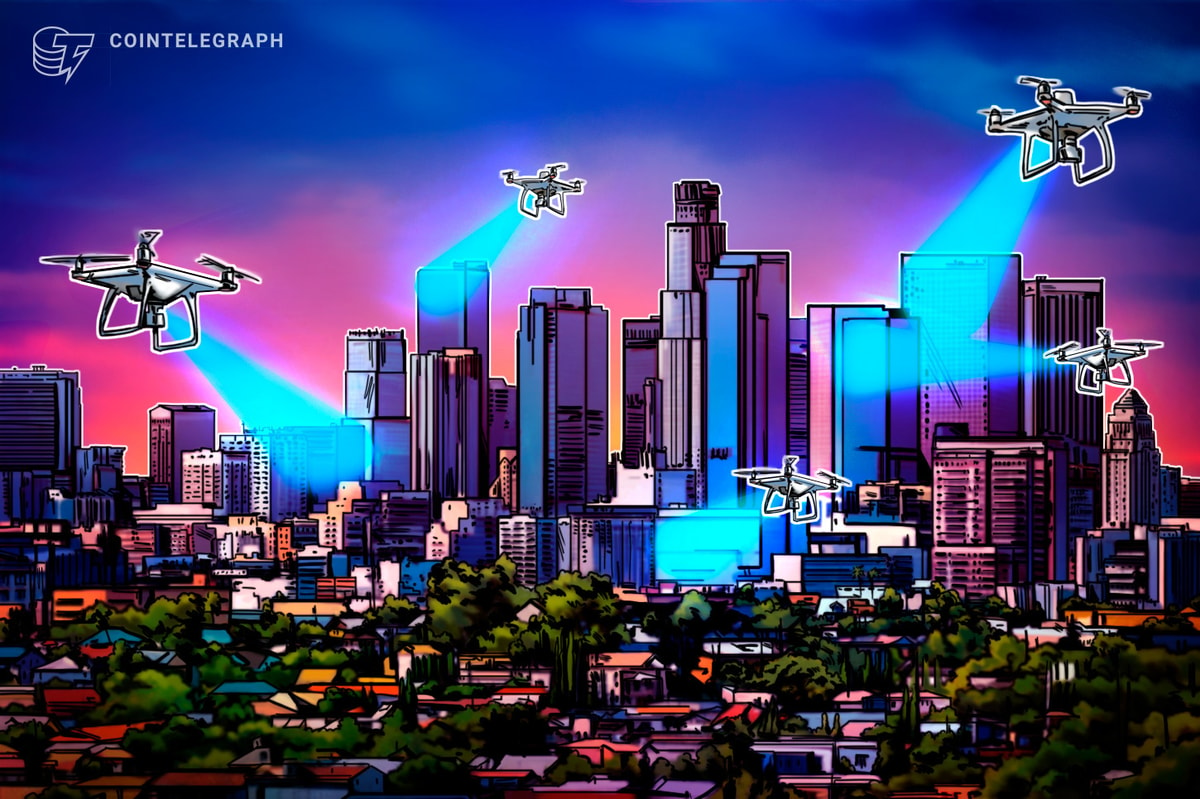World Cell is launching a blockchain-enabled 5G community utilizing drones to beam connectivity on to customers worldwide. The corporate partnered with Indonesian telecom agency Protelindo to create World Cell Stratospheric, an initiative designed to bridge gaps left by conventional communication infrastructure worldwide.
The venture makes use of hydrogen-powered drones, flying at 60,000 ft within the stratosphere, to supply wi-fi protection of as much as 15,000 sq. kilometers per plane utilizing 450 guidable beams, Charles Barnett, the chief enterprise officer of World Cell Group, instructed Cointelegraph.
This aerial community outperforms satellite-based telecommunications, with “6ms of whole latency,” permitting it to supply service “as much as 18 occasions cheaper” per gigabyte than space-based infrastructure, Barnett mentioned.
The corporate is making an attempt to take a slice of the sky-based communications pie, a $98.3 billion sector, which incorporates satellite tv for pc and aerial-based communications platforms.
World Cell has already established a ground-based decentralized bodily infrastructure community (DePin) that mixes conventional telecom infrastructure and impartial, distributed suppliers to prolong service to underserved communities by patching lifeless zones.
Associated: SpaceX strikes $153M in BTC after three-year silence
Challenges to launching atmospheric-based telecommunication networks
Launching and sustaining a stratospheric-based communication platform carries a number of technical and regulatory challenges, Barnett instructed Cointelegraph.
The corporate is aiming for every hydrogen-powered drone, which has a 56-meter wingspan and weighs 4 tons, to stay airborne for 9 days earlier than it should land at a chosen refueling station.
This implies the craft, and its gasoline supply, have to be as mild as attainable to realize most gasoline effectivity and stay aloft, whereas additionally making certain strong building that may face up to climate circumstances at decrease altitudes within the environment.
At altitudes of 60,000 ft, the drones will sit above climate techniques. The stratosphere additionally has calmer winds than at decrease altitudes, the place turbulence could be a difficulty.
Nevertheless, even within the stratosphere, the drones should nonetheless be protected against cosmic radiation, which may injury digital tools. Equally, the aspect of the drone dealing with the solar can be bombarded with warmth, which have to be displaced to forestall injury.
Assembly regulatory necessities outlined by civil aviation authorities just like the Federal Aviation Administration (FAA) in the USA and the European Aviation Security Company (EASA) can be a problem for such initiatives.
This consists of buying permits to fly unmanned aerial automobiles (UAVs) and constructing every drone to requirements outlined by authorities aviation businesses.
World Cell faces competitors from the bottom and house
World Cell has a number of rivals in each decentralized wi-fi networks and space-based communication platforms.
Helium Cell, for example, is a decentralized protocol that mixes a distributed community of wi-fi nodes and partnerships with established telecom corporations like AT&T to increase wi-fi protection and supply service to lifeless zones.
Elon Musk’s Starlink, which gives web connectivity via satellitescan be competing for market share in communication infrastructure, though the 2 corporations fill a special area of interest, Barnett instructed Cointelegraph.
Starlink is extra suited to ship service to distant areas with none mobile connectivity, whereas World Cell Stratospheric is suited to areas with the next density of cell customers, Barnett added.
The satellite tv for pc communication platform additionally requires buying devoted {hardware} for connectivity, Barnett mentioned.
Journal: Most DePIN initiatives barely even use blockchain: True or false?


